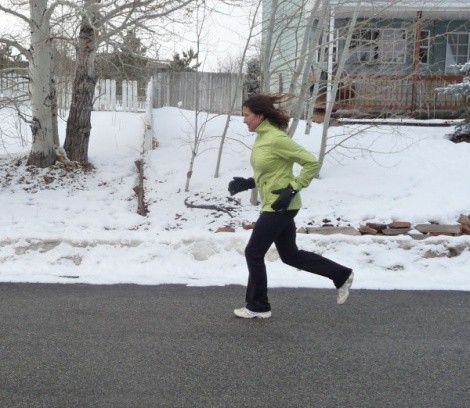
If you’re a competitive athlete, or even just an active person who wants to get in better aerobic shape, go up to the mountains to improve your aerobic fitness fast.
There are a lot of benefits to working out at altitude. Dozens of scientific studies—and results from elite sport coaches—prove that altitude training gives athletes more endurance and conditions the body to use oxygen more efficiently. For runners and cyclists now preparing for spring races, even going just a few hundred feet higher will help performance. Holly Flanders, a former U.S. ski-team racer who won several World Cup races, says, “Exercising at higher altitudes causes the body to get used to lower levels of oxygen in the air. Over time, it increases the number of red blood cells, as well as the production of EPO [erythropoietin], and causes other physiological changes that increase aerobic endurance and improve athletic performance at lower altitudes.”
Here’s the science: The higher you go above sea level, the less oxygen there is in the air. There’s also less air pressure, so blood vessels actually dilate, or expand. To help the body meet its needs, more oxygen- rich blood cells are created. To help produce them, the kidneys secrete EPO. That means your body naturally creates the performance-enhancing drug often used by cheaters for endurance events.
Some of the most desirable and scientifically proven benefits of training higher are actually less well-known. For example, Brian Martin, an Australian running coach and the author of the e-book Running Technique, quotes studies showing that altitude training can increase red-blood-cell count by as much as 7 percent over a three-week period, while increasing physical tolerance of lactic acid even faster. That means you won’t suffer as much from the runner’s plague—cramping muscle pains—if you live in the Wasatch valleys but practice running in mountain towns.
Those of us in the Wasatch area already benefit from some altitude gain. The average elevation in the Salt Lake, Ogden and Utah valleys is about 4,300 feet above sea level. The average elevation in Park City is about 7,000 feet. Thus, if you live in the valley, and ride a bike or go running in Park City, you’ll be training roughly 2,700 feet higher.
At first, this type of training will be exhausting. Until your body adjusts—which it does within a few weeks—you’ll get tired quickly and be gasping for breath. It’s best not to push yourself too hard. Still, you do want to get near your personal redline to force your body to adjust faster. A good starting measurement is to push yourself to the point where you’re somewhat breathless, but have no chest pain. And, as always, the caveat for any type of change in your physical activity is to talk with your doctor to make sure you’re in shape to perform altitude workouts. If you want to train without pain, start out with just walking and gradually increase the pace. In addition, dress in layers, so you can remove them as you get warmer.
You can change it up with these higher workouts. If the ground is too covered with snow to permit safe cycling, rent or buy a pair of snowshoes and go jogging up mountain trails. However, never go running in the backcountry or on any slope without first checking for avalanche danger. To speak to a human, call the Utah Avalanche Center at 801-524-5304, or for recorded avalanche advisories, call the Advisory Hotline at 888-999-4019.
Two good places to run, bike or hike with low avalanche danger—and, usually, lower snow coverage—are Park City’s Rail Trail, and the Temple Quarry Trail, which starts behind the digital sign at the mouth of Little Cottonwood Canyon. That trail could be the best place to begin altitude training because it’s at a much lower elevation than the Rail Trail, with an uphill elevation gain of only a few hundred feet.
Of course, you can also train at altitude by buying a lift ticket and going skiing or snowboarding. The question is, if it’s totally awesome fun, is it still working out?